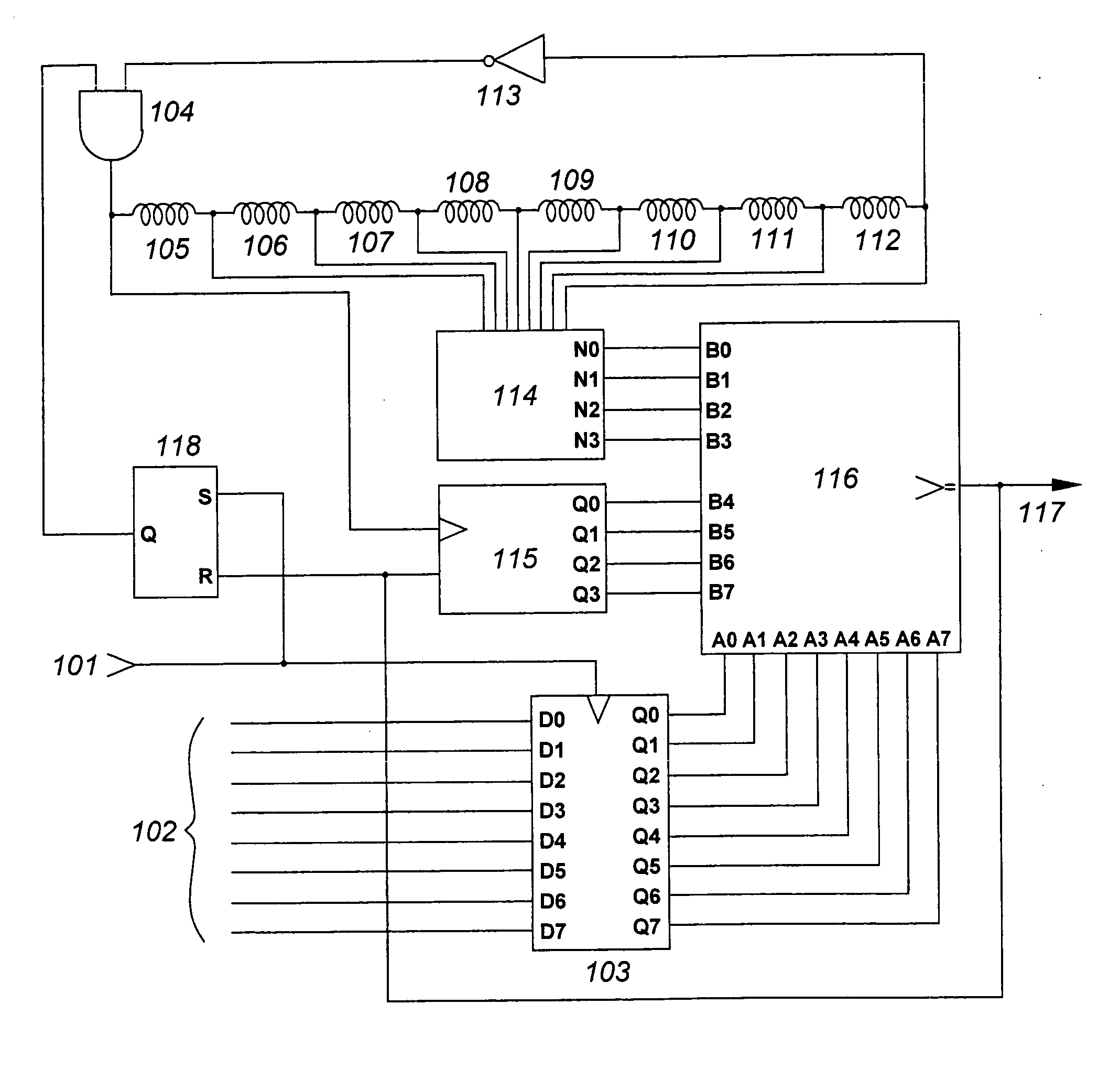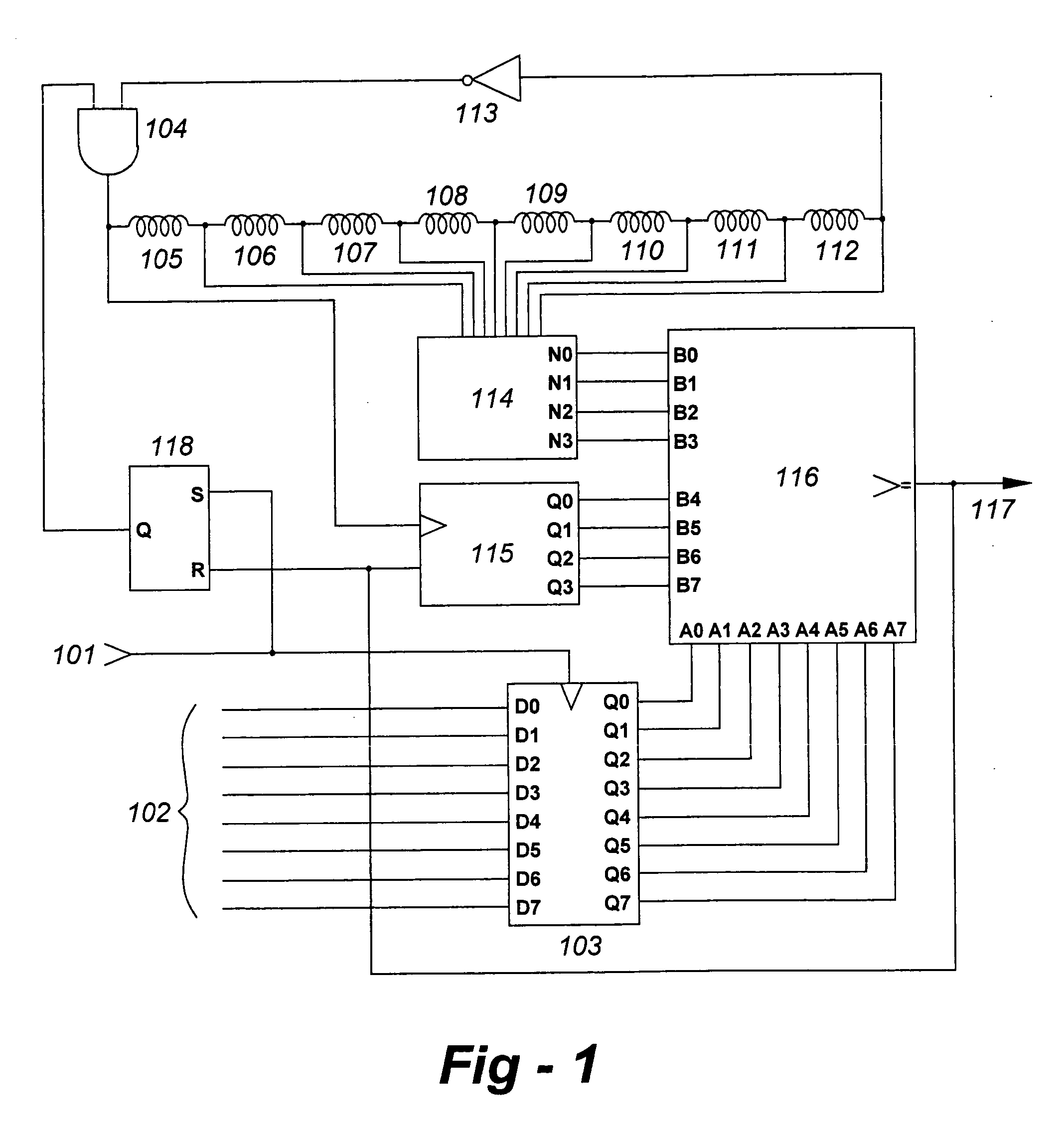Synchronous delay-line amplification technique
a delay-line amplification and delay-line technology, applied in pulse manipulation, pulse technique, instruments, etc., can solve the problem of significant distortion, the dynamic range of digital-input switching amplifiers is limited by the resolution (or frequency) of the clock signal, and the time resolution of the output pulsewidth cannot be finer than that of the driving clock signal
- Summary
- Abstract
- Description
- Claims
- Application Information
AI Technical Summary
Benefits of technology
Problems solved by technology
Method used
Image
Examples
Embodiment Construction
[0007] Referring now to FIG. 1, delay-elements 105, 106, 107, 108, 109, 110, 111, 112 are connected serially, with the ultimate output connected to the input of inverter 113. The output converter 113 is gated by AND gate 104 to then drive delay element 105 as well as the clock input of counter 115. The delay elements 105 through 112 and inverter 113 therefore comprise a ring oscillator which produces a series of bit patterns to decoder 114, and a clock signal to counter 115.
[0008] It can be seen that, in this particular example, eight specific bit patterns will be presented to decoder 114 after each negative-going transition of the clock input of counter 115, and that eight different specific bit patterns will be presented to decoder 114 after each positive-going transition of the clock input of counter 115. Decoder 114 receives the bit patterns from delay elements 105 through 112, and produces a known binary number for each bit pattern at outputs N0, N1, N2, N3. Outputs N0 through...
PUM
 Login to View More
Login to View More Abstract
Description
Claims
Application Information
 Login to View More
Login to View More - R&D
- Intellectual Property
- Life Sciences
- Materials
- Tech Scout
- Unparalleled Data Quality
- Higher Quality Content
- 60% Fewer Hallucinations
Browse by: Latest US Patents, China's latest patents, Technical Efficacy Thesaurus, Application Domain, Technology Topic, Popular Technical Reports.
© 2025 PatSnap. All rights reserved.Legal|Privacy policy|Modern Slavery Act Transparency Statement|Sitemap|About US| Contact US: help@patsnap.com


